Mindo, a small town about 2 hours northwest of Quito by road, is located in a lush cloud forest, nestled in the Western Andes. Mindo is renowned for having one of the highest number of bird species in the world.
On a recent visit to Ecuador by our friends Richard and Andrea from Edmonton, Canada, we all agreed that we needed to go to Mindo to see this so-called bird paradise for ourselves, and form our own impressions.
We were forewarned by Beverly and Jack’s driver Juan that it rains a great deal in Mindo, and this turned out to be all too true. Our first day in Mindo it poured! Luckily we had the foresight to make a couple of important trips to the “rain gear” shop and purchase rain-proof ponchos and rubber boots, because later that evening that is exactly what our guide Danny indicated we needed for our early morning nature walk the next day to see the notorious Andean cock-of-the-rock.
The next morning we were up at 4:00 AM (yes, that’s right: Joe and Lori were up way before sunrise!) for our 4:40 AM pickup time. A few minutes after our appointed time our guide Danny roared up in his truck and whisked us away to the “Refugio Paz de las Aves” (i.e., Bird Peace Refuge).
Forty (40) minutes later we were on our feet, trudging through the muddy forest trail in the dark with only two flashlights between the five (5) of us, to help navigate the steep and narrow path. Danny and Lori, who was second in line, led us one tentative step at a time, sometimes up, sometimes down, sensing the path forward through an uncanny 6th sense. At times we had certain luxuries: a precious rope railing to hold on to, a dirt staircase to ease our climb or descent. Most of the time, though, we just made our way in the dark.
Then, after what seemed like an eternity, as the first few faint waves of daylight opened the way forward, we reached our first destination — the Andean cock-of-the-rock lek!
Note: A lek is an area where birds gather during the breeding season for community courtship displays to attract mates. In a lek, male birds defend their territory and engage in different courtship displays such as dancing, displaying distinctive plumage or making specific sounds to attract the attention of nearby females. [Source: http://birding.about.com/od/Bird-Glossary-L-M/g/Lek.htm].There was nothing to do but wait. Fighting back sleep, the lack of that all-important 1st cup of coffee, and hunger, we waited for what seemed like hours (but in reality were only minutes of clock time), until fleeting tufts of red appeared across our field of vision, only to disappear moments later. (Note – that was Joe’s experience. Lori was enjoying every second of the sights and sounds of this exotic forest!)
And then the show began.
Of course, this was not the only bird species we got to see on this our very first birding tour (well, second, if you include the 2012 Sheep and Crane Festival in Faro, Yukon, where, as luck would have it, we never did see any cranes).
Being blessed to see different bird species does not mean that one can actually photograph them, however. Many of these exotic birds sat in the tree canopy of this ancient forest. Here is a list of the birds that we did see, looking through Danny’s Swarovski 20 X 60 telescope:
Golden Tanager, Masked Trogon, Crimson-rumped Toucanet, Green-rumped Toucanet, Golden-headed Quetsal (male and female), Scaled Fruiteater, Dark-backed Wood Quail, Ochre-breasted Antpitta, Toucan Barbet, Roadside Hawk, and the Black Vulture.
The above list came about courtesy of Danny’s identifications and Richard’s enunciations of same into his iPhone 5 microphone. Here is a sample:
The following are some of the types or species of hummingbirds we were fortunate enough to photograph at the Refuge.
Our impressions of Mindo: a fabulous place, a must-see destination in Ecuador!
Lastly, here are a couple of relevant links:

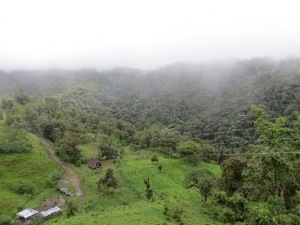
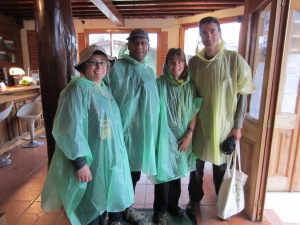
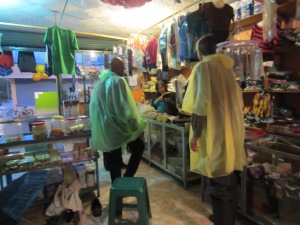
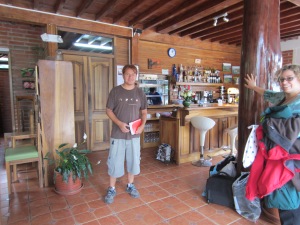

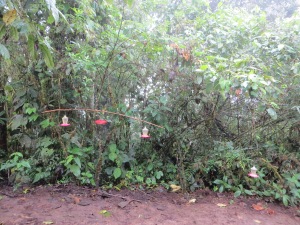
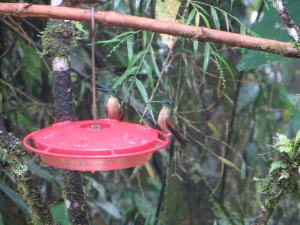
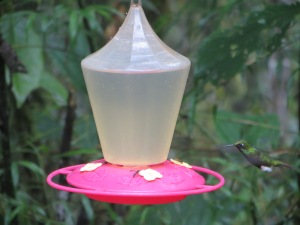
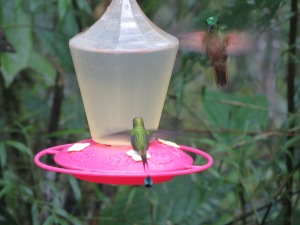
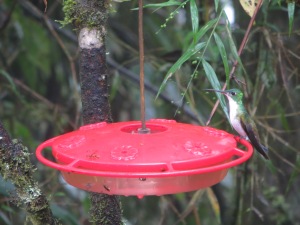
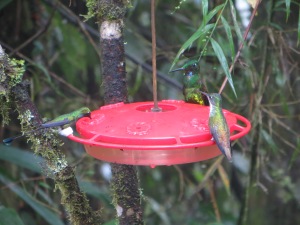
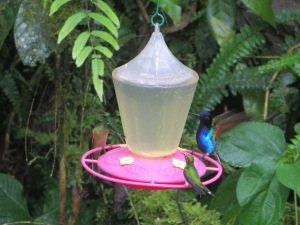
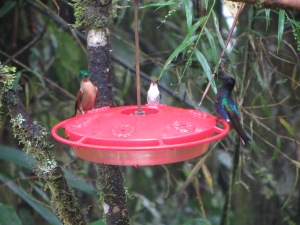
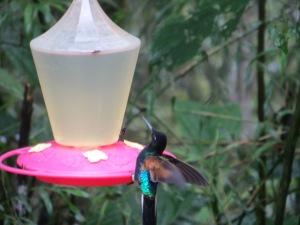
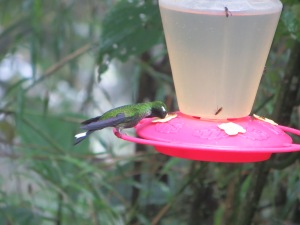
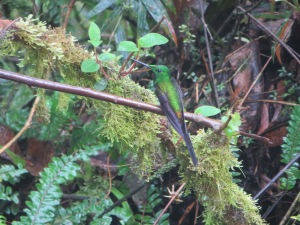
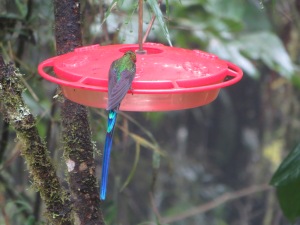
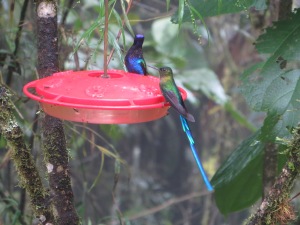
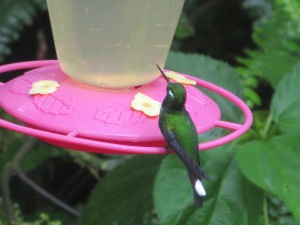

Yes, definitely a must see destination. Check out our hilarious adventures in Ecuador. http://atruetalltale.wordpress.com
What a great post, Joe. Your words, a video, a sound recording, and all those gorgeous photos. Thanks!
Thanks, Elaine! But it was truly a Joe and Lori team effort!
Hi! This is Beverly & Jack’s daughter, Linda. Wow! You certainly got some great shots of the hummingbirds and the Andean Cock of the Rock! My husband and I visited Mindo on our honeymoon and experienced this same tour, replete with cow dung on our shoes in that blind walk to the lek during the pre-dawn hours. Great to read about your experience and relive ours! Where did you stay while in Mindo?
So pleased you enjoyed our post! We stayed at the DragonFly Inn right in town.